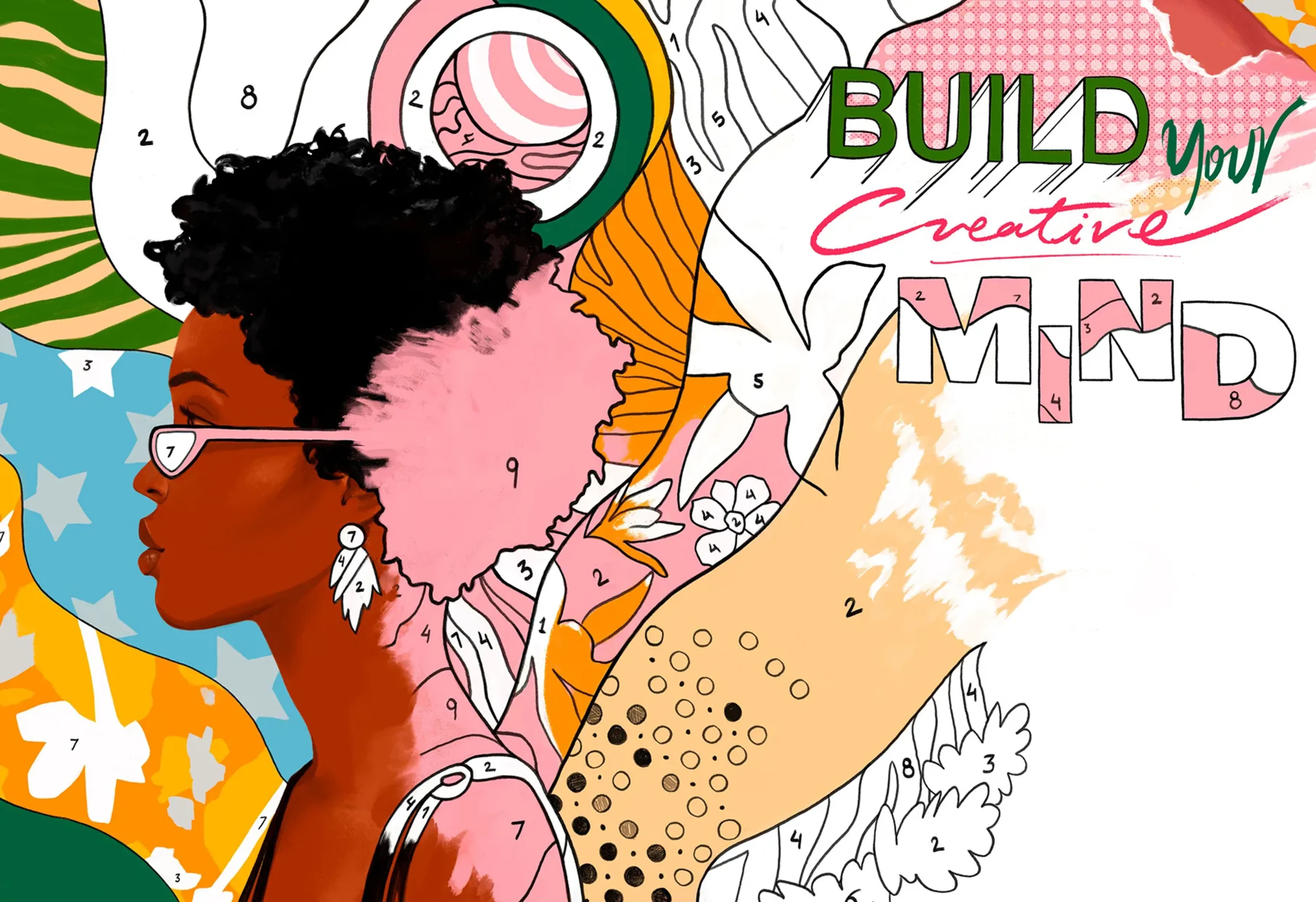

I grew up in pre-google days when, if you had a question, you had to go the library and look the answer up in a book- you could not just type in a question and have thousands of answers delivered instantly like you can now.
When I wrote my internship / dissertation projects at college in Mangalore , I spend most of my days in visiting college libraries and talking to people who could help me. It took months. If I wrote my dissertation today then it would probably take me a few days research via Google. But the very fact that I have these offline skills of looking for solutions and answers in the ‘old fashioned way’ means that I can now think beyond the search Box. I can find answers anywhere and have excellent research skills because of it. Which, in turn, provides me with the inspiration and information to access when I want to think of a creative solution.

Further I came across that this was one of the seven principles that Leonardo Da Vinci lived by and to which he attributed his great creative output.
Curiositẚ : Be insatiably curious & forever asking questions.
Demonstrszione : Knowledge through experience & learning through mistakes.
Sensazione : Refinement of the sense to enliven experience.
Sfumato : Ambiguity, paradox & uncertainty.
Arte/ scienza : The balance between the logical and the imagination.
Corporalita : Maintaining a fit and healthy.
Connessione : The connection of all things and interdependence.
To be creative, Read offline widely and as often as you can. Make frequent visits to places that stimulate your interest and curiosity. Listen to as many thought of leaders, speaking as possible. The creative process is a learning which involves like a switch between two states or modes that is open and closed.

When we are under pressure and stress to deliver , such as in our everyday working lives, we are in closed mode. When we are relaxed, detached from problems, and playful ,we are in open mode. Open mode can be considered ‘Playful’(Lateral Thinking and Closed logical ,Vertical Thinking ). Just as we need open and closed states to solve a problem : the open state allows us to develop creative ideas and then the closed state to plan and implement the idea. These are similarly aligned to vertical and lateral thinking processes.

Essentially ,we must be relaxed to achieve the open mode. When our minds are at ease -when those alpha waves are rippling through the brain-We are more likely to direct the spotlight of attention inward ,toward that stream of remote associations emanating from the right hemisphere. Innovative thinking is like strength training for your brain, sharpening your problem-solving skills and slashing stress. Creativity allows us to stretch out minds, do new and exciting things, and engage ourselves in a way that takes us one step closer to reaching our full potential. So what is it exactly that makes a person creative? Are some people just born that way, or is it a skill that you can develop much like a muscle?
In contrast ,when we are diligently focused, our attention tends to be directed outward, towards the details of the problems we are trying to solve .While this pattern of attention is necessary when solving problems analytically, it actually prevents us from detecting the connections that leads to insights.
That’s why you will feel many insights happen during warm showers, as for many people it’s the most relaxing part of the day. A study in the Creativity Research Journal found that surrounding employees with interesting and unusual things, people, games and activities stimulates new thinking better than a dull environment. This is the theory underpinning the fad for more playful office décor among West Coast creative tech companies like Google and Apple, with their beach-hut meeting pods and giant slides.

Therefore research indicates that the best environments in which we can incubate creativity are :
When we are in touch with our emotional Response .
When Dopamine is being released.
When we are relaxed
When we are distracted from routine working .
So when does the perfect storm arise?
In the shower, Exercising , Cooking to unwind ,Listening to Music, any activity where we are relaxed, not focused on a mundane function and not thinking is our sweet ,spot for ideas.
Creativity is all around is in every aspect of our lives, from the clothes we wear in the morning to the appliances we make our breakfast with, from the car we drive to work to the building we work in. even the most mundane objects such as ballpoint biro or a road sign are creative ideas.
Some cultures believe creativity to be a capricious spirit, reliant upon the whims of divine intervention. In reality, creativity owes more to shear hard work & tenacity, working through many iterations before the solution is reached.
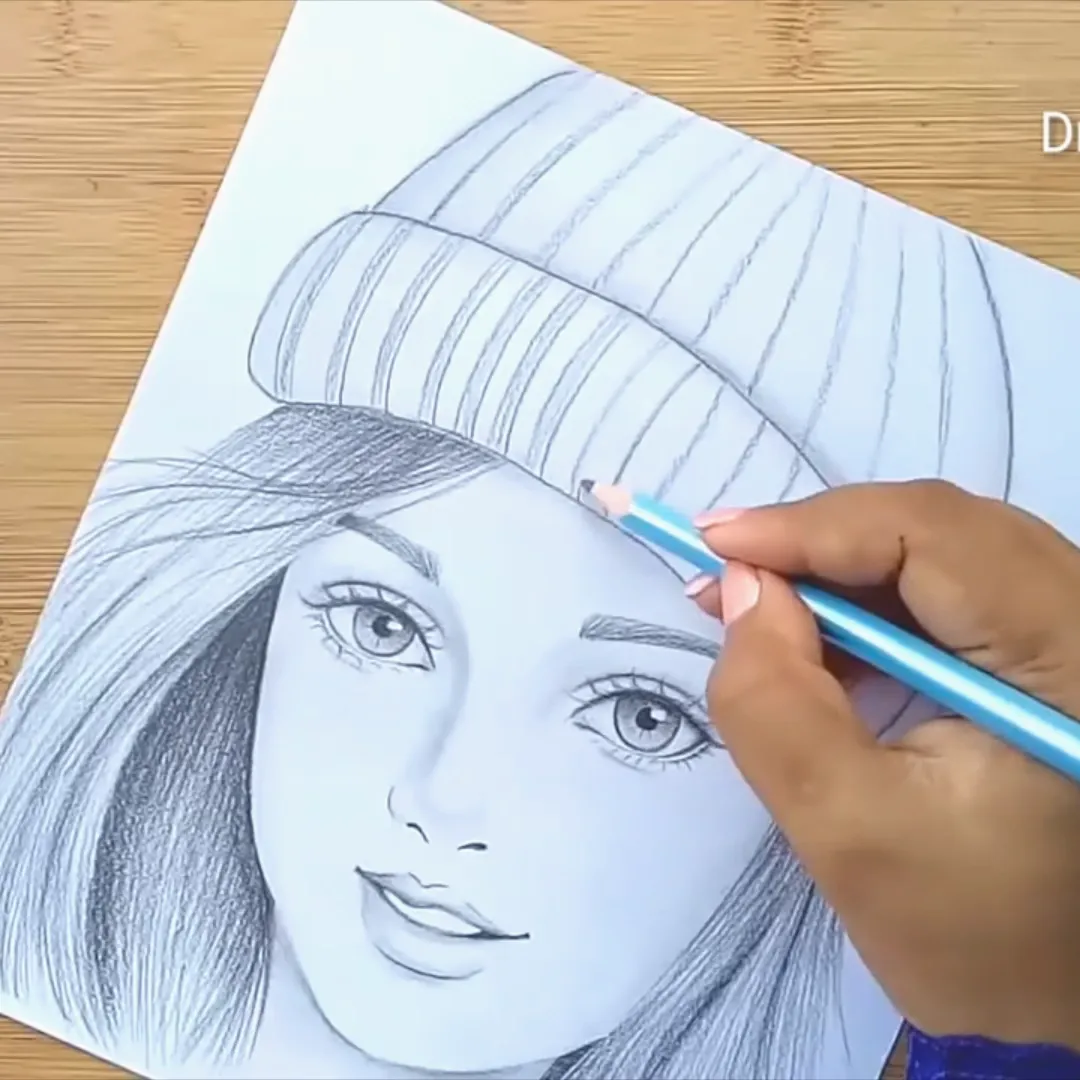
Most people believe that creativity means painting a picture or performing a song but that is a skill based understanding- process, not substance.
The word creativity calls to mind artistic pursuits like oil painting and playing an instrument. But it’s far more than that. In psychology, creativity refers to generating ideas that are novel and useful

There is much confusion around the difference between style and creativity. A lot of designers are stylists, they make things look good. Creativity is about concepts, ideas and innovation. Considered to be exclusive to artists and designers, creativity is in fact a skill we all can access.
Everyone has the capacity to generate ideas. Admittedly, some people are more inclined, towards creative thinking just as some are able to figure large Maths calculations in their head or swim like Michael Phelps. Anyone can increase his or her levels of creativity.
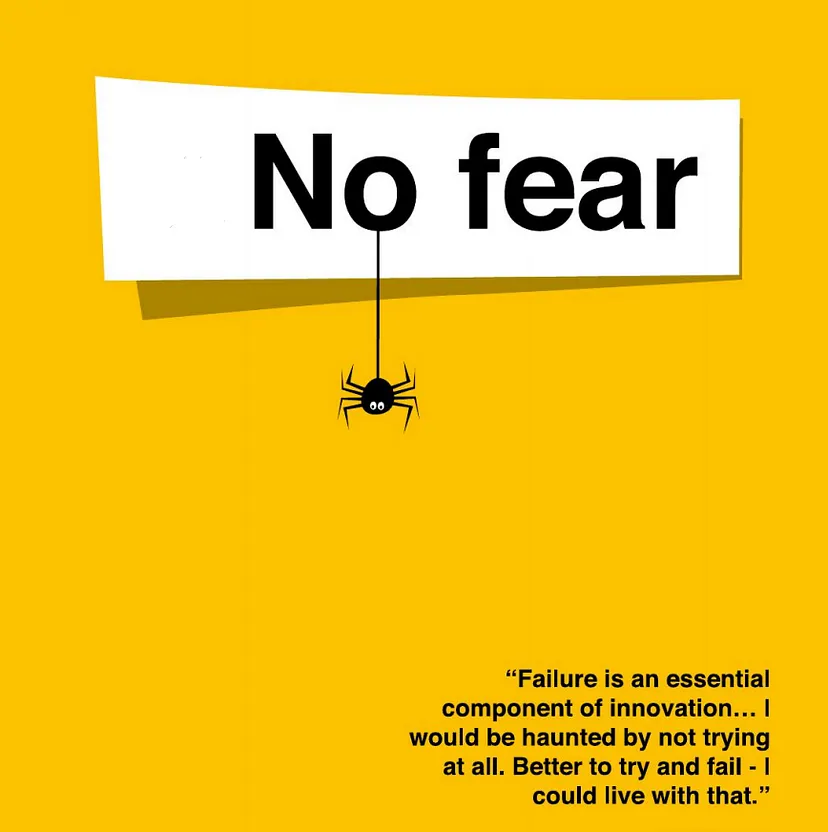
Even after 20+ years of experience, I still keep studying and working at it every single day. Learning is one of my biggest passions in life and I think we should remain open to change and keep learning right until we expire. We need to be Always curious.
Creativity is perceived to be something external & out of our control or an inherent talent for a chosen few- but thinking and idea-generation are skills that can be learned.
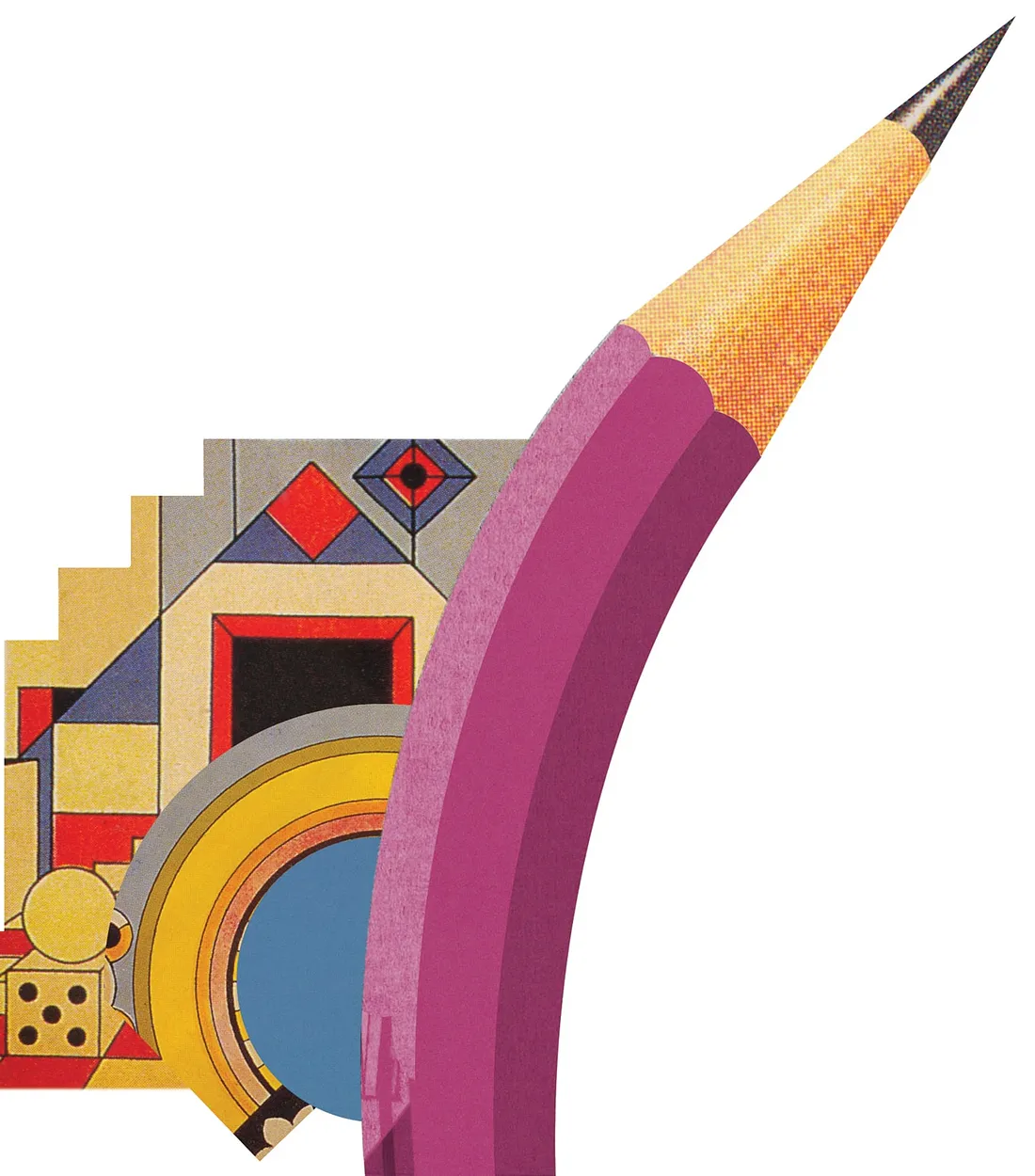
Some people do have a greater aptitude for thinking creatively and laterally just as some people are more logic-based but it is a misconception that creativity is an exclusive right of a select group.
Until you have learnt the fundamentals and know how to do something the right way, it’s very difficult to do it your best ability. I believe that the lack of support for teaching creative and lateral thinking is schools and the way in which our education puts value on academia and not creative subjects, contributes to the attitude of “I am just not a creative person.”
Vertical Thinking
The traditional type of thinking is vertical thinking. Sequential and logic based vertical thinking ,it moves through a set of process and stops when the best solution for a problem is found. Most thinking is done this way. We are taught to think vertically.
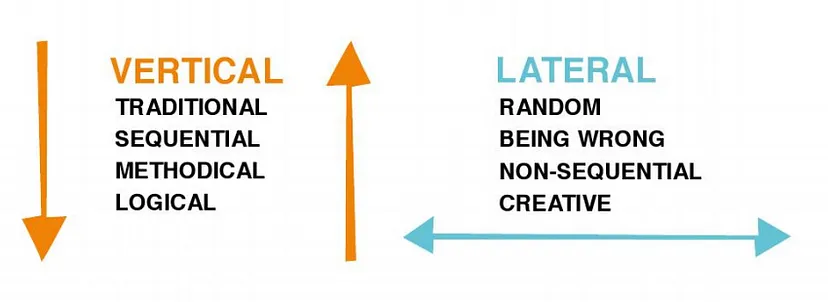
Lateral Thinking
Lateral thinking is about removing preconception and being prepared to work with ideas that at first appear wrong and jumping randomly between thoughts in a non-sequential manner taking such a seemingly chaotic approach to thinking enables you to set asides any ingrained beliefs that may influence your thinking subconsciously. Thinking is then open to break thoughts of radical new solutions. Ideas can be conceived in a way that simply isn’t possible with vertical thinking.
Vertical and Lateral thinking are co-dependent. Vertical and lateral thinking are both essential for different tasks and work hand-in-hand .Whilst lateral thinking can conceive of radical new creative ideas, vertical thinking can then Implement those new ideas in functional ways. Learning to think, laterally will improve your overall thinking and creative sills by expanding your brain’s capacity to look for new solutions.

Three techniques for lateral thinking are:
· Using an analogy: To avoid being trapped by the obvious when looking for creative ideas and solutions, use an analogy to shift your thinking. For example imagine wanting a solution to find car keys-consider being lost in fog , a vision impaired person finding their way around , a stranger in a foreign location. By using an analogy you will see the problem in a different way and approach it with fresh solutions.
· Reverse information and reject the obvious: To break the natural pattern of order, For example ; in online marketing your aim is to direct traffic to a website. Reverse and consider how do you take the website to the traffic? Or reject the obvious and the brain is forced to consider other alternatives. For example, when considering how to increase the online visibility of a website, imagine that search engines don’t exist.

Opposing elements : Another pattern breaker is to take two random and opposing items and connect them (a classic technique for humour) for example; a fish riding a bicycle, a ballet, dancing hippo, a toad that sings opera. Brain storm and create a mind map of key words associated to your themes as this can throw up lots of possibilities for potential connection that suggest creative ideas.
Creativity arises from a constant churn of ideas and one of the easiest way to encourage that fertile froth is to keep your mind engaged with your project.
When you work regularly, inspiration strikes regularly. And finally let go your ideas, do not be afraid of being wrong, be prepared to be wrong to be right.
Imitate to innovate and learn by copying, you can learn and acquire skills and become creative. You do not need to be born creative .
The author of this article is Dr. Vinita Mathur (vinita@dezyneecole.com),she is an esteemed educationist, and the visionary owner of a prestigious college , Dezyne École College . Her intellectual prowess, dedication to education, and innovative leadership have made her a prominent figure in academia and a source of inspiration for countless students and educators alike.